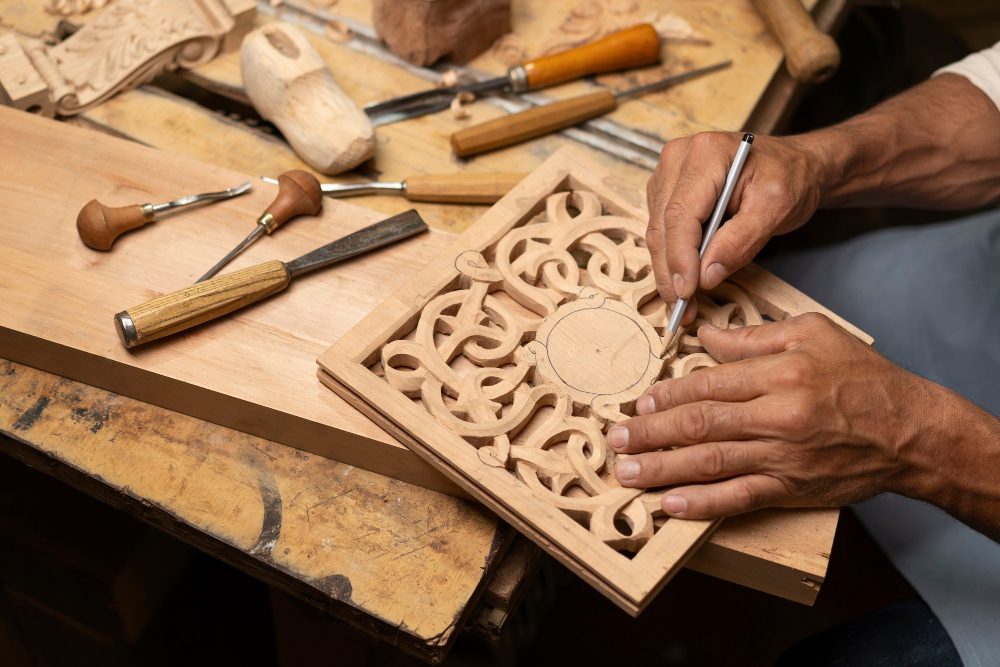What do the two pillars in masonry mean?
In the world of masonry, the two pillars symbolize strength, stability, and enlightenment. These pillars have deep symbolic significance and can be found in various cultures and religions throughout history. In Freemasonry, the two pillars are known as Boaz and Jachin, representing different aspects of life and duality. Let’s delve deeper into the meaning behind these pillars and their significance in masonry.
The pillars in ancient architecture
The use of pillars in architecture dates back to ancient times, where they were not only functional but also held symbolic meaning. In Egyptian architecture, pillars were incorporated in temples and tombs, signifying a connection between the earthly and spiritual realms. Similarly, in Greek and Roman architecture, pillars were used to support buildings and conveyed an impression of grandeur and strength.
In the context of masonry, the two pillars represent the pillars mentioned in the Bible’s Book of Kings in the account of Solomon’s Temple. The pillars named Boaz and Jachin were placed at the entrance of the temple and were believed to hold significant mystical and symbolic significance.
The meaning of Boaz and Jachin
Boaz and Jachin, the two pillars in masonry, carry specific meanings that are closely tied to the practice of Freemasonry. Boaz, the left-hand pillar, is associated with strength and stability. It represents the material world, the physical or masculine aspect, and the pillar of wisdom. On the other hand, Jachin, the right-hand pillar, signifies beauty and establishment. It represents the spiritual or feminine aspect, the pillar of beauty.
Combined, these two pillars create balance and harmony, embodying the duality of life. They serve as a reminder for individuals to seek equilibrium between material and spiritual pursuits, knowledge and aesthetics, strength and beauty.
Symbolic interpretation
The symbolism of the pillars goes beyond their physical representation. They hold deeper meaning in masonry, highlighting virtues that individuals should strive for in their personal and spiritual growth.
Strength: The pillar of Boaz represents physical strength and stability. It reminds individuals to cultivate inner strength, resilience, and integrity to navigate life’s challenges.
Wisdom: Boaz also symbolizes wisdom and knowledge. It encourages individuals to pursue intellectual growth, seek enlightenment, and develop a deeper understanding of the world.
Beauty: Jachin represents beauty and establishment. It emphasizes the importance of cultivating inner beauty, promoting harmony, and creating a positive impact on others and the world.
Balance: The two pillars together call for balance in all aspects of life. They encourage individuals to find equilibrium between the physical and spiritual realms, between material pursuits and moral values.
“The two pillars remind us that true strength is not solely found in physical power but in the balance of various qualities.” – Freemasonry proverb
What is the triple triangle in masonry?
The triple triangle is a significant symbol within Freemasonry, representing various meanings and principles within the craft. It is often referred to as the “Delta” or the “Blazing Star.” This symbol is found in many Masonic lodges, rituals, and teachings.
Meaning and symbolism
The triple triangle is said to represent the three great pillars of Freemasonry: wisdom, strength, and beauty. Each side of the triangle corresponds to one of these pillars, which are essential qualities that every Mason should strive to embody.
Wisdom represents the pursuit of knowledge, learning, and understanding. It encourages Masons to continually seek out wisdom to apply to their daily lives.
Strength symbolizes the physical, moral, and spiritual strength that Masons aim to cultivate within themselves. It reminds them to stand firm in their beliefs and uphold their values.
Beauty represents harmony, balance, and aesthetics. Masons are encouraged to appreciate and create beauty in their surroundings, both in their physical environments and in their interactions with others.
The Blazing Star
The triple triangle is often depicted with a central point, representing the Blazing Star. This star is usually seen as a symbol of divine presence, guiding Masons towards truth and enlightenment. It also serves as a reminder for Masons to navigate through life with integrity and virtue.
“The Blazing Star, or Glory in the center, refers us to that grand luminary, the Sun, which enlightens the earth, and by its benign influence dispenses blessings to mankind.” – Albert Pike
Significance in Masonic rituals
The triple triangle is utilized in various Masonic rituals and ceremonies. It often serves as a focal point, representing the guiding principles that Masons should strive to uphold.
In some rituals, the three sides of the triangle are associated with the three degrees of Freemasonry: Entered Apprentice, Fellow Craft, and Master Mason. This connection reinforces the importance of wisdom, strength, and beauty throughout a Mason’s journey.
Furthermore, the triple triangle can be found in tracing boards, which are visual aids used in Masonic ceremonies. These boards depict important symbols and teachings, helping Masons understand the principles and lessons of the craft.
Conclusion
The triple triangle in masonry embodies the fundamental pillars of wisdom, strength, and beauty. It serves as a constant reminder for Masons to seek knowledge, cultivate personal strength, and appreciate aesthetic harmony. The Blazing Star at its center symbolizes divine guidance and the pursuit of truth. Through its various representations and uses within Masonic rituals, the triple triangle holds significant meaning in the world of Freemasonry.



